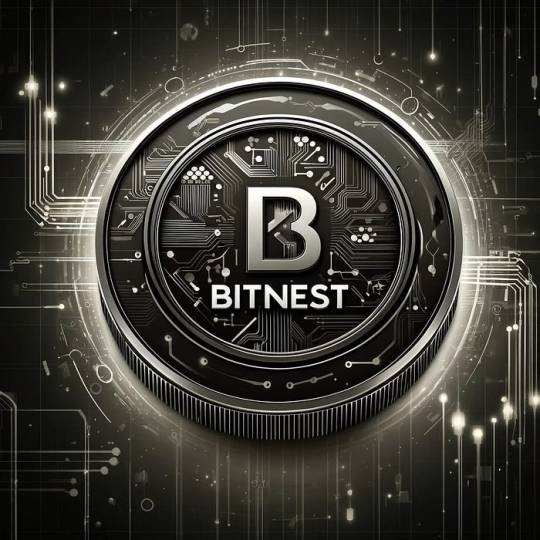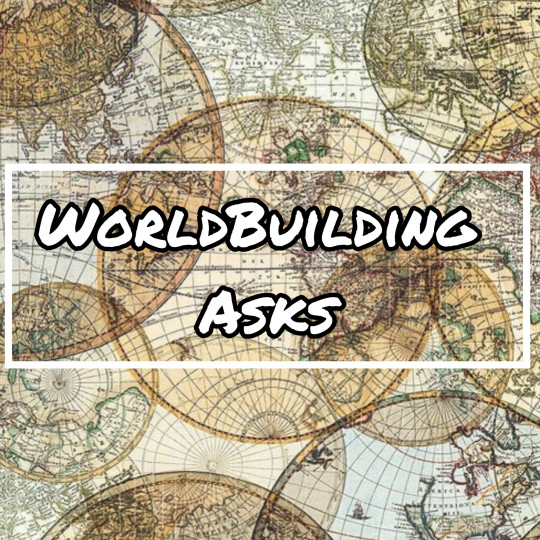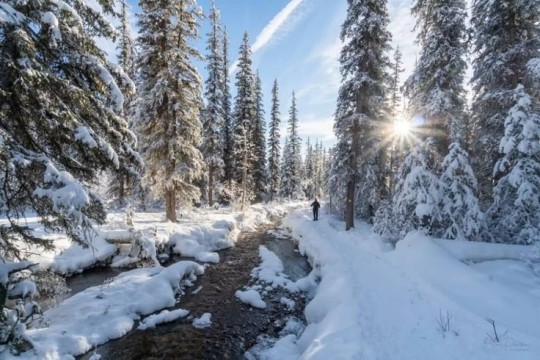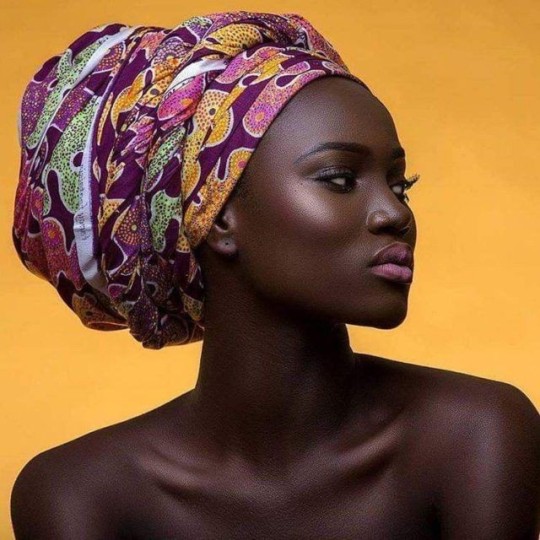#Barrier Systems Market
Explore tagged Tumblr posts
Text
Barrier Systems Market: Protecting Lives and Building Safer Communities

Imagine driving down a busy highway, walking through a bustling city square, or entering a secure facility. What keeps you safe in these everyday scenarios? The answer often lies in something we might not always notice but rely on every day: barrier systems. These unassuming structures—whether crash barriers, bollards, guardrails, or drop arms—play a vital role in protecting lives, managing traffic, and securing public spaces. According to a report by MarketsandMarkets, the global barrier systems market is growing steadily, projected to expand from USD 19.8 billion in 2022 to USD 25.4 billion by 2027, at a compound annual growth rate (CAGR) of 5.1%. But behind these numbers lies a story of innovation, safety, and the growing need to adapt to an increasingly urbanized world.
What Are Barrier Systems?
Barrier systems are physical structures designed to control, direct, or restrict movement. They come in various forms, each tailored to specific needs. For instance, crash barriers on highways absorb the impact of collisions, preventing vehicles from veering off the road. Bollards, those sturdy posts you see outside buildings or in pedestrian zones, protect people and property from vehicle intrusions. Guardrails line residential streets and parking lots, offering a cost-effective way to keep vehicles in check. And drop arms or gates regulate access at toll booths, parking lots, and secure facilities. These systems are the unsung heroes of modern infrastructure, quietly ensuring our safety.
Why Are Barrier Systems So Important?
Rapid Urbanization and Infrastructure GrowthAs cities grow and populations expand, the demand for robust infrastructure is skyrocketing. Governments and private developers are investing heavily in transportation networks, smart cities, and public safety projects. Barrier systems are a critical part of these efforts, helping to prevent accidents, manage traffic, and protect pedestrians in crowded urban environments.
Safety Regulations and StandardsGovernments worldwide are tightening safety regulations to reduce road accidents and enhance public safety. For example, the European Union has mandated the use of high-performance crash barriers on highways to minimize collision impacts. These regulations are pushing the adoption of advanced barrier systems, ensuring they meet the highest safety standards.
Rising Security ConcernsIn an era of heightened security threats, barrier systems are more important than ever. Bollards, for instance, have become a common sight in public spaces, protecting against vehicle-ramming attacks. Similarly, crash barriers and guardrails are essential for reducing fatalities and injuries on highways. These systems are not just about convenience—they’re about saving lives.
Technological InnovationsThe barrier systems market is evolving, thanks to advancements in materials and technology. Energy-absorbing barriers, smart bollards with IoT connectivity, and automated drop arms with RFID systems are transforming the industry. These innovations are making barrier systems more durable, adaptable, and efficient, ensuring they can meet the challenges of modern infrastructure.
Types of Barrier Systems and Their Uses
Crash BarriersCrash barriers, or guardrails, are a lifeline on highways and bridges. They absorb the impact of collisions, preventing vehicles from crashing into dangerous areas. Their role in reducing accident severity and saving lives cannot be overstated.
BollardsBollards are versatile and increasingly vital in urban settings. From protecting storefronts to securing government buildings, they provide a simple yet effective way to control vehicle access and safeguard pedestrians.
GuardrailsGuardrails are the workhorses of low-speed areas like residential neighborhoods and parking lots. They offer an affordable solution for keeping vehicles on the road and out of restricted zones.
Drop Arms and GatesDrop arms and gates are the gatekeepers of secure facilities, parking lots, and toll booths. Automated systems with advanced features like license plate recognition are making them smarter and more efficient.
Regional Trends: A Global Perspective
North AmericaNorth America leads the barrier systems market, driven by a strong focus on road safety and infrastructure development. The U.S., in particular, is investing in smart highways and advanced traffic management systems, creating a steady demand for innovative barrier solutions.
EuropeEurope is another key player, thanks to stringent safety regulations and the presence of leading manufacturers. Countries like Germany, France, and the UK are at the forefront of adopting cutting-edge barrier systems.
Asia-PacificThe Asia-Pacific region is poised for the highest growth, fueled by rapid urbanization, increasing vehicle ownership, and government initiatives to improve road safety. Countries like China, India, and Japan are driving demand in this dynamic market.
Middle East & AfricaThe Middle East is investing heavily in infrastructure projects, including smart cities and transportation networks, which is boosting the demand for barrier systems. In Africa, efforts to improve road safety and reduce accident rates are creating new opportunities for market growth.
To know more download PDF Report Insight :
While the barrier systems market is on an upward trajectory, it’s not without its challenges. High installation and maintenance costs can be a barrier (pun intended) for smaller projects, and a lack of awareness about advanced solutions in developing regions may slow adoption. However, these challenges also present opportunities for innovation. Manufacturers are developing cost-effective, easy-to-install solutions that cater to a wider range of customers.
The rise of smart cities and the integration of IoT in barrier systems are opening exciting new possibilities. Imagine bollards equipped with sensors that provide real-time data on traffic flow or security breaches, enabling authorities to respond quickly and efficiently. These advancements are not just about technology—they’re about creating safer, more connected communities.
#Barrier Systems Market#Infrastructure Safety#Crash Barriers#Bollards#Fences#Drop Arms#Road Safety#Community Safety#Traffic Management#Safety Solutions#Urban Infrastructure#Industrial Security#Crash Protection Systems#Highway Safety#Sustainable Infrastructure
0 notes
Text
The global barrier systems market is projected to reach USD 21,643.3 million in 2023, registering a Compound Annual Growth Rate (CAGR) of 4.1% during the forecast period 2024-2030. The growth of the marketis majorly driven by the investments in highway, railway, and airport development necessitate the use of safety barrier systems to protect vehicles and pedestrians.
0 notes
Text
Can AI widen customer and employee engagement gap
New Post has been published on https://thedigitalinsider.com/can-ai-widen-customer-and-employee-engagement-gap/
Can AI widen customer and employee engagement gap

AI has the potential to both widen and narrow the gap between employees and customers and ultimately cause brand impact, depending on how it is implemented and utilized within an organization. When I say widening the gap I am referencing interactions being dehumanized and overly robotic.
Factors that could widen the employee-customer gap
1. Overreliance on AI systems: If organizations become overly reliant on AI systems for customer interactions, it could lead to a lack of human touch and empathy, which customers often value in their experiences.
2. Impersonal interactions: AI-powered chatbots, virtual assistants, and automated response systems can sometimes provide generic or impersonal responses, which may not effectively address the specific needs and concerns of customers.
3. Data privacy and trust issues: Customers may have concerns about the privacy and security of their personal data when interacting with AI systems, which could create a sense of distrust and distance between them and the organization’s employees.
Factors that could narrow the employee-customer gap
1. Enhanced customer insights: AI can analyze vast amounts of customer data, including behavior patterns, preferences, and feedback, providing employees with valuable insights to better understand and cater to customer needs.
2. Improved efficiency and responsiveness: AI-powered systems can automate routine tasks, freeing up employees to focus on more complex and personalized customer interactions, potentially improving response times and overall customer experience.
3. Personalized recommendations and experiences: AI can help organizations deliver personalized product recommendations, tailored marketing campaigns, and customized experiences based on individual customer preferences and behaviors.
4. Augmented employee capabilities: AI can augment employee skills and knowledge by providing them with real-time insights, recommendations, and decision-support tools, enhancing their ability to provide better customer service and support.
To ensure that AI narrows the employee-customer gap, organizations must strike a balance between leveraging AI capabilities and maintaining human involvement in customer interactions. Effective training, clear communication, and a customer-centric culture are crucial to ensure that AI is used as a tool to enhance the overall customer experience rather than creating a barrier between employees and customers.
The implementation of AI across various aspects of an organization’s operations can have significant implications for both brand perception and customer perception. Here are some potential implications to consider:

Brand perception
1. Innovation and technological leadership: The use of AI can position a brand as innovative, forward-thinking, and at the forefront of technological advancements. This can enhance the brand’s reputation and appeal, particularly among tech-savvy customers.
2. Efficiency and reliability: If AI is implemented effectively to streamline processes, improve response times, and enhance the overall customer experience, it can reinforce the brand’s perception as efficient, reliable, and customer-centric.
3. Privacy and security concerns: Customers may have concerns about the privacy and security of their data when interacting with AI systems. If these concerns are not addressed transparently and effectively, it could damage the brand’s reputation and erode customer trust.
customer-centric Some customers may perceive the widespread use of AI as a replacement for human interactions, which could negatively impact the brand’s perception, particularly in sectors where personal connections are highly valued.
Customer perception
1. Personalization and customization: AI can enable organizations to deliver highly personalized experiences by analyzing customer data and tailoring products, services, and interactions accordingly. This can enhance customer perception and satisfaction.
2. Convenience and accessibility: AI-powered chatbots, virtual assistants, and self-service portals can improve customer convenience by providing 24/7 support and accessibility, potentially improving customer perception and loyalty.
3. Speed and efficiency: AI can streamline processes and automate tasks, leading to faster response times and more efficient service delivery. This can positively impact customer perception, especially in industries where speed and efficiency are highly valued.
4. Consistency and quality: AI systems can help ensure consistent and high-quality customer experiences by standardizing processes and reducing human errors. However, if not implemented correctly, AI could also introduce new inconsistencies or errors, negatively affecting customer perception.
5. Privacy and trust concerns: Customers may have concerns about the use of their data by AI systems, particularly if they perceive a lack of transparency or control over how their information is used. This could erode customer trust and negatively impact their perception of the brand.
To mitigate potential negative implications and leverage the benefits of AI, organizations should:
1. Clearly communicate their AI strategies and policies to customers, addressing privacy and security concerns transparently.
2. Implement robust data governance and ethical AI practices to build trust and maintain customer privacy.
3. Ensure AI systems are designed with a human-centric approach, maintaining a balance between automation and human interaction where appropriate.
4. Continuously monitor customer feedback and adapt AI implementations to address any emerging concerns or perception issues. By proactively addressing potential brand and customer perception implications, organizations can effectively harness the power of AI while maintaining a positive brand image and fostering customer trust and loyalty.

Creating a comprehensive marketing plan for the rollout of AI across your organization requires a strategic approach that addresses both internal and external stakeholders. Here are some thoughts:
1. Define your AI strategy and objectives: Clearly articulate your organization’s vision and goals for implementing AI solutions. Identify the specific areas or processes where AI will be deployed and the expected benefits (e.g., improved efficiency, enhanced customer experience, cost savings).
2. Conduct an internal assessment: Evaluate your organization’s readiness for AI adoption, including infrastructure, data availability, and employee skills. – Identify potential challenges or resistance points that may arise during the rollout. Develop a change management plan to address concerns and facilitate a smooth transition.
3. Develop a communication plan: Craft clear and compelling messaging that highlights the benefits of AI while addressing potential concerns about job security, data privacy, and ethical considerations. Create a range of communication materials (presentations, videos, infographics) tailored to different audiences (employees, customers, partners, investors). Establish a cadence for regular updates and progress reports throughout the rollout.
4. Build an internal AI ambassador program: Identify influential employees across different departments or teams to act as AI ambassadors. Provide comprehensive training and resources to these ambassadors, equipping them with the knowledge and skills to evangelize AI within the organization. Leverage their influence and credibility to build excitement and buy-in among their peers.
5. Develop a customer education and engagement strategy: Create educational content (blog posts, whitepapers, webinars) to help customers understand the role of AI in enhancing their experiences. Organize customer events, demos, or roadshows to showcase AI capabilities and address any concerns or misconceptions. Encourage customer feedback and input to continuously improve the AI solutions and ensure they meet evolving needs.
6. Engage with industry influencers and thought leaders: Identify and collaborate with influential individuals or organizations in your industry who are respected voices in AI and emerging technologies. Invite them to contribute to your content, participate in events, or endorse your AI initiatives. Leverage their credibility and reach to build awareness and trust among your target audience.
7. Measure and optimize: Establish key performance indicators (KPIs) to track the success of your AI marketing efforts (e.g., website traffic, social media engagement, lead generation, customer satisfaction). Continuously monitor and analyze data to identify areas for improvement or adjustment. Incorporate customer and employee feedback to refine your messaging, content, and tactics as needed.
8. Celebrate milestones and successes: Recognize and showcase the achievements and positive impact of your AI rollout, both internally and externally. Share customer success stories, employee testimonials, and quantifiable results to reinforce the value of AI and maintain momentum.
By following this comprehensive approach, you can create a well-rounded marketing plan that builds awareness, generates excitement, and addresses potential concerns about the AI rollout across your organization. Remember to remain agile and adapt your plan as needed based on feedback and evolving market conditions.
Fancy meeting like-minded AI experts?
We’ll be in Berlin
11-12 September 2024, with three co-located summits:
Chief AI Officer Summit
Generative AI Summit
Computer Vision Summit
Join us!
AIAI Berlin | Uniting AI’s builders & execs
Unite with hundreds of pioneering engineers, developers & executives that are facilitating the generative AI revolution.

#2024#Accessibility#agile#ai#AI adoption#ai marketing#AI strategy#AI systems#AI-powered#amp#approach#Artificial Intelligence#assessment#automation#awareness#barrier#Behavior#berlin#Blog#brand image#cadence#change#change management#chatbots#chief AI officer#collaborate#communication#comprehensive#content#cost savings
0 notes
Text


In the current rapidly evolving digital currency market, decentralized finance (DeFi) platforms are redefining the shape of financial services with their unique advantages. Bit Loop, as a leading decentralized lending platform, not only provides a safe and transparent lending environment, but also opens up new passive income channels for users through its innovative sharing reward system.
Personal links and permanent ties: Create a stable revenue stream One of the core parts of Bit Loop is its recommendation system, which allows any user to generate a unique sharing link when they join the platform. This link is not only a “key” for users to join the Bit Loop, but also a tool for them to establish an offline network. It is worth noting that offline partners who join through this link are permanently tied to the recommender, ensuring that the sharer can continue to receive rewards from the offline partner’s activities.
Unalterable referral relationships: Ensure fairness and transparency A significant advantage of blockchain technology is the immutability of its data. In Bit Loop, this means that once a referral link and live partnership is established, the relationship is fixed and cannot be changed. This design not only protects the interests of recommenders, but also brings a stable user base and activity to the platform, while ensuring the fairness and transparency of transactions.
Automatically distribute rewards: Simplify the revenue process Another highlight of the Bit Loop platform is the ability for smart contracts to automatically distribute rewards. When the partner completes the circulation cycle, such as investment returns or loan payments, the smart contract automatically calculates and sends the corresponding percentage of rewards directly to the recommender’s wallet. This automatic reward distribution mechanism not only simplifies the process of receiving benefits, but also greatly improves the efficiency of capital circulation.
Privacy protection and security: A security barrier for funds All transactions and money flows are carried out on the blockchain, guaranteeing transparency and traceability of every operation. In addition, the use of smart contracts significantly reduces the risk of fraud and misoperation, providing a solid security barrier for user funds. Users can confidently invest and promote boldly, and enjoy the various conveniences brought by decentralized finance.
conclusion As decentralized finance continues to evolve, Bit Loop offers a new economic model through its unique recommendation system that enables users to enjoy highly secure and transparent financial services while also earning passive income by building and maintaining a personal network. Whether for investors seeking stable passive income or innovators looking to explore new financial possibilities through blockchain technology, Bit Loop provides a platform not to be missed.

#In the current rapidly evolving digital currency market#decentralized finance (DeFi) platforms are redefining the shape of financial services with their unique advantages. Bit Loop#as a leading decentralized lending platform#not only provides a safe and transparent lending environment#but also opens up new passive income channels for users through its innovative sharing reward system.#Personal links and permanent ties: Create a stable revenue stream#One of the core parts of Bit Loop is its recommendation system#which allows any user to generate a unique sharing link when they join the platform. This link is not only a “key” for users to join the Bi#but also a tool for them to establish an offline network. It is worth noting that offline partners who join through this link are permanent#ensuring that the sharer can continue to receive rewards from the offline partner’s activities.#Unalterable referral relationships: Ensure fairness and transparency#A significant advantage of blockchain technology is the immutability of its data. In Bit Loop#this means that once a referral link and live partnership is established#the relationship is fixed and cannot be changed. This design not only protects the interests of recommenders#but also brings a stable user base and activity to the platform#while ensuring the fairness and transparency of transactions.#Automatically distribute rewards: Simplify the revenue process#Another highlight of the Bit Loop platform is the ability for smart contracts to automatically distribute rewards. When the partner complet#such as investment returns or loan payments#the smart contract automatically calculates and sends the corresponding percentage of rewards directly to the recommender’s wallet. This au#but also greatly improves the efficiency of capital circulation.#Privacy protection and security: A security barrier for funds#All transactions and money flows are carried out on the blockchain#guaranteeing transparency and traceability of every operation. In addition#the use of smart contracts significantly reduces the risk of fraud and misoperation#providing a solid security barrier for user funds. Users can confidently invest and promote boldly#and enjoy the various conveniences brought by decentralized finance.#conclusion#As decentralized finance continues to evolve#Bit Loop offers a new economic model through its unique recommendation system that enables users to enjoy highly secure and transparent fin
1 note
·
View note
Text
Crash Barrier Systems Market Size, Share, Demand, Companies and Forecast 2023-2028
IMARC Group has recently released a new research study titled “Crash Barrier Systems Market by Type (Portable, Fixed), Technology (Rigid, Semi-Rigid, Flexible), Application (Roadside, Median, Bridge, Work Zone), and Region 2023-2028”, offers a detailed analysis of the market drivers, segmentation, growth opportunities, trends and competitive landscape to understand the current and future market…

View On WordPress
#Crash Barrier Systems Market#Crash Barrier Systems Market Outlook#Crash Barrier Systems Market Report#Crash Barrier Systems Market SHare#Global Crash Barrier Systems Market
0 notes
Text
#Industrial Barrier Systems Market#Industrial Barrier Systems Market Size#Industrial Barrier Systems Market Share#Industrial Barrier Systems Market Trends#Industrial Barrier Systems Market Growth#Industrial Barrier Systems Market Analysis#Industrial Barrier Systems Market Revenue#Econ Market Research
0 notes
Text
Things Biden and the Democrats did, this week #26
July 5-12 2024
The IRS announced it had managed to collect $1 billion in back taxes from high-wealth tax cheats. The program focused on persons with more than $1 million in yearly income who owned more than $250,000 in unpaid taxes. Thanks to money in Biden's 2022 Inflation Reduction Act the IRS is able to undertake more enforcement against rich tax cheats after years of Republicans cutting the agency's budget, which they hope to do again if they win power again.
The Biden administration announced a $244 million dollar investment in the federal government’s registered apprenticeship program. This marks the largest investment in the program's history with grants going out to 52 programs in 32 states. The President is focused on getting well paying blue collar opportunities to people and more people are taking part in the apprenticeship program than ever before. Republican pledge to cut it, even as employers struggle to find qualified workers.
The Department of Transportation announced the largest single project in the department's history, $11 billion dollars in grants for the The Hudson River Tunnel. Part of the $66 billion the Biden Administration has invested in our rail system the tunnel, the most complex Infrastructure project in the nation would link New York and New Jersey by rail under the Hudson. Once finished it's believed it'll impact 20% of the American economy by improving and speeding connection throughout the Northeast.
The Department of Energy announced $1.7 billion to save auto worker's jobs and convert factories to electronic vehicles. The Biden administration will used the money to save or reopen factories in Michigan, Ohio, Pennsylvania, Georgia, Illinois, Indiana, Maryland, and Virginia and retool them to make electric cars. The project will save 15,000 skilled union worker jobs, and created 2,900 new high-quality jobs.
The Department of Housing and Urban Development reached a settlement with The Appraisal Foundation over racial discrimination. TAF is the organization responsible for setting standards and qualifications for real estate appraisers. The Bureau of Labor Statistics last year found that TAF was 94.7% White and 0.6% Black, making it the least racially diverse of the 800 occupations surveyed. Black and Latino home owners are far more likely to have their houses under valued than whites. Under the settlement with HUD TAF will have to take serious steps to increase diversity and remove structural barriers to diversity.
The Department of Justice disrupted an effort by the Russian government to influence public opinion through AI bots. The DoJ shut down nearly 1,000 twitter accounts that were linked to a Russian Bot farm. The bots used AI technology to not only generate tweets but also AI image faces for profile pictures. The effort seemed focused on boosting support for Russia's war against Ukraine and spread negative stories/impressions about Ukraine.
The Department of Transportation announces $1.5 billion to help local authorities buy made in America buses. 80% of the funding will go toward zero or low-emission technology, a part of the President's goal of reaching zero emissions by 2050. This is part of the $5 billion the DOT has spent over the last 3 years replacing aging buses with new cleaner technology.
President Biden with Canadian Prime Minster Justin Trudeau and Finnish President Alexander Stubb signed a new agreement on the arctic. The new trilateral agreement between the 3 NATO partners, known as the ICE Pact, will boost production of ice breaking ships, the 3 plan to build as many as 90 between them in the coming years. The alliance hopes to be a counter weight to China's current dominance in the ice breaker market and help western allies respond to Russia's aggressive push into the arctic waters.
The Department of Transportation announced $1.1 billion for greater rail safety. The program seeks to, where ever possible, eliminate rail crossings, thus removing the dangers and inconvenience to communities divided by rail lines. It will also help update and improve safety measures at rail crossings.
The Department of the Interior announced $120 million to help tribal communities prepare for climate disasters. This funding is part of half a billion dollars the Biden administration has spent to help tribes build climate resilience, which itself is part of a $50 billion dollar effort to build climate resilience across the nation. This funding will help support drought measures, wildland fire mitigation, community-driven relocation, managed retreat, protect-in-place efforts, and ocean and coastal management.
The USDA announced $100 million in additional funds to help feed low income kids over the summer. Known as "SUN Bucks" or "Summer EBT" the new Biden program grants the families of kids who qualify for free meals at school $120 dollars pre-child for groceries. This comes on top of the traditional SUN Meals program which offers school meals to qualifying children over the summer, as well as the new under President Biden SUN Meals To-Go program which is now offering delivery of meals to low-income children in rural areas. This grant is meant to help local governments build up the Infrastructure to support and distribute SUN Bucks. If fully implemented SUN Bucks could help 30 million kids, but many Republican governors have refused the funding.
USAID announced its giving $100 million to the UN World Food Program to deliver urgently needed food assistance in Gaza. This will bring the total humanitarian aid given by the US to the Palestinian people since the war started in October 2023 to $774 million, the single largest donor nation. President Biden at his press conference last night said that Israel and Hamas have agreed in principle to a ceasefire deal that will end the war and release the hostages. US negotiators are working to close the final gaps between the two sides and end the war.
The Senate confirmed Nancy Maldonado to serve as a Judge on the Seventh Circuit Court of Appeals. Judge Maldonado is the 202nd federal Judge appointed by President Biden to be confirmed. She will the first Latino judge to ever serve on the 7th Circuit which covers Illinois, Indiana, and Wisconsin.
Bonus: At the NATO summit in Washington DC President Biden joined 32 allies in the Ukraine compact. Allies from Japan to Iceland confirmed their support for Ukraine and deepening their commitments to building Ukraine's forces and keeping a free and Democratic Ukraine in the face of Russian aggression. World leaders such as British Prime Minster Keir Starmer, German Chancellor Olaf Scholz, French President Emmanuel Macron, and Ukrainian President Volodymyr Zelenskyy, praised President Biden's experience and leadership during the NATO summit
#Joe Biden#Thanks Biden#politics#us politics#american politics#election 2024#tax the rich#climate change#climate action#food insecurity#poverty#NATO#Ukraine#Gaza#Russia#Russian interference
3K notes
·
View notes
Text

This diagram illustrates how marshes can adapt to rising sea levels and naturally "migrate" upland if given enough space. Credit: Julie Rossman/Audubon
Excerpt from this story from the Audubon Society:
For over 40 years, the Coastal Barrier Resources Act has been a little-known bipartisan environmental law—quietly protecting critical bird habitat, providing coastal communities with a natural buffer against storms and sea-level rise, and saving taxpayers billions of dollars, all while staying under the radar. Audubon has long been a champion of this law, and now we have reason to celebrate! Last week, President Biden signed the Bolstering Ecosystems Against Coastal Harm (BEACH) Act, updating the Coastal Barrier Resources Act and expanding its protected system of coastal areas that buffers people and birds from flooding on our coasts.
Congress passed the BEACH Act with overwhelming bipartisan support just last month, adding nearly 300,000 acres of wetlands and beaches to the Coastal Barrier Resources Act (CBRA) system, codifying its largest expansion since 1990. For years, Audubon has worked with a diverse coalition of partner organizations, multiple presidential administrations, and legislators on both sides of the aisle to massively expand the CBRA system, and the sweeping success of this bill is one of our most exciting accomplishments for the coast.
Created in 1982, the CBRA protects coastal habitat and property while saving lives and federal taxpayer dollars in a distinctive way. Undeveloped beaches and coastal wetlands around our country provide vital habitat for birds and wildlife, especially in the face of climate change impacts such as sea-level rise and increased storm frequency and intensity. These coastal areas are also particularly prone to those climate impacts, endangering lives, property, and vulnerable species. The CBRA discourages development in these hazard-prone areas by removing most federal spending, including flood insurance, disaster recovery grants, and other federal expenditures on the CBRA’s system of protected areas. This market-based approach is working. A recent study demonstrates this in its finding that CBRA is highly effective at achieving its intended goals—reducing development by 85 percent compared to nearby areas, reducing flood damage by 25 percent, and adding ecologically important layers of protection to coastal areas.
Currently, CBRA protects 3.5 million acres on the coasts of the Atlantic, Gulf of Mexico, Great Lakes, Puerto Rico, and the U.S. Virgin Islands. These largely undeveloped areas are an ideal habitat for birds like American Oystercatchers and Piping Plovers to nest and rest well away from any human disturbance. Intact coastal beaches and wetlands like this also serve as a natural buffer for nearby communities from storms and sea-level rise. Beach dunes act as speed bumps to slow down wind and waves, and marshes act as sponges soaking up floodwaters.
1K notes
·
View notes
Text
#Sterile Barrier System Market Size#Sterile Barrier System Market Scope#Sterile Barrier System Market Trend#Sterile Barrier System Market Growth
0 notes
Text
Canonical enshittification

This is the Facebook playbook: you lure in publishers by promising them a traffic funnel ("post excerpts and links and we'll show them to people, including people who never asked to see them"), and then the rug-pull: "Post everything here, don't link to your own site. Become a commodity supplier to our platform. Abandon all your own ways of making money. Become entirely subject to the whims of our recommendation system."
Next will be: "We block links to other sites because they might be malicious."
Then some kind of "pivot to video."
Probably not video (though who knows?) but some other feature that a major rival has, which Twitter will attempt to defraud its captive, commodified suppliers into financing an entry into.
In case you were wondering, yes, this is canonical enshittification. Lure in business customers (publishers) by offering surpluses (algorithmic recommendation and an ensuing traffic funnel). Lock them in (by capturing their audience and blocking interop and logged-out reading).
Then rug the publishers, clawing back all the surpluses you gave them and more, draining them of all available capital and any margins they have, until they die or bite the bullet and leave.
I would also give good odds on this leading to a revivification of the "Pay us tens of thousands of dollars a month for a platinum checkmark and we'll actually show what you post to the people who asked to see it."
That will be pitched as the answer to publishers' complaints about not wanting to turn themselves into commodity Twitter inputs. It will be priced at the same (or more) as the revenues publishers expect to lose from being commodified, making it a wash.
All of this seems to me to be an "unfair and deceptive business practice" under Sec 5 of the FTC Act.
If I sign up to follow you because I want to see what you post, and Twitter shadowbans your posts unless they are formatted to maximize your dependence on Twitter, they have deceived me, and are being unfair to you.
This is *very* analogous to the Net Neutrality debate, where a platform blocks or deprioritizes the things its users ask to see, based on whether the suppliers of those things are its competitors.
I've written about how an end-to-end principle for social media could be enforced under Sec 5 of the FTCA, how it would address this kind of sleazy practice, how it would be easy to administer, and wouldn't form a barrier to entry for new market entrants:
https://pluralistic.net/2022/12/10/e2e/#the-censors-pen
7K notes
·
View notes
Text
WorldBuilding Ask Game

Here is a little ask game for WorldBuilding in your WIP to pad out one country or all of them! Use it for yourself or ask a friend and spread some love. Focus on a particular section and have fun!
Geography

What does your world look like? What's the biome? Are there different ones?
Are there any oceans? If so, are they accessible? Are they a reliable source of travel and food?
Are there any rivers in your world? Any lakes? What's the longest river? Deepest lake?
Is there a safe supply of drinking water? If not, why not?
Are there mountains in your world? What's the highest one?
What is the weather like? How does this effect life?
What animals inhabit the world? What animals are indigenous or considered exotic?
What are some natural features your world is famous for? Is your world considered beautiful?
How many countries in your world?
How are countries divided? By natural lines or by agreements?
Population

What's the population like? Is it large or sparse?
Is there any factors in population density? Do more people live in a certain area more than elsewhere? Why is that?
Are there different peoples living in your world? If so, how do they get on?
How important is nationality? Are foreigners tolerated? Or are they unwelcome?
What countries get on? What countries hate one another?
Are there any important cities? Why are they important?
What's the architecture like? Are there any outside influences?
What's a typical building material? What's considered an expensive feature to include?
What is infrastructure like? Are roads and railways in good condition?
Is there public transport? Is it reliable?
Government

What system of government does your world adhere to? Is it popular?
Where is the seat of government?
Are there different governmental agencies?
Are there political parties? If so, what are their goals?
How much control does the government have over the average person?
Can your people vote? If not, why not? If so, who has/hasn't the right to?
Are there any parties or organisations that oppose the government?
How does the government crack down on sedition?
Are people allowed to criticise the government? If so, how? If not, how do they get around it?
How are laws made? Who makes them?
Is there any odd laws in your world?
What are some punishments to crime? Are they considered fair?
What crimes are unfathomable for the people?
Who handles justice? Is justice obtainable for all?
Are there any police? What's their reputation?
What role does the military play in your world?
Who controls the army? Head of state or government as a whole?
Is it considered a good career path?
Who can join the army? Are there any restrictions?
What is your world's stance on war? Are there any neutral parties? Or particularly warlike ones?
Commerce and Trade

How is trade done?
Is currency universal or dictated by region?
How is your economy going? What effects it?
What trade is your world known for?
What are some exports? What must your world import?
Are any goods considered luxurious?
What services are available in your world? What services are niche?
What sort of work is common? Is work readily available?
Who is expected to work?
Are workers treated fairly or unfairly?
Are there any ways workers are protected? If not, what are some consequences?
Is your world more reliant on technology or on labour?
Is agriculture possible in your world? If so what can your people grow?
How big is industry? What goods can your people make?
What resources can your country exploit?
What are some barriers to trade and commerce?
Is your nation known for quality? Or Quantity?
Who does your country trade with most often? Who do they boycott?
Are there any major ports in your country?
Are there any banned goods? If so, is there a black market for their purchase?
Society
How society expect one to behave in public? Are there different expectations for different people/genders/ranks?
Is there a social order? Can one move up the ranks?
Is there any considerations made on account of rank, gender, age or position?
What is considered a social faux pas?
Are there any gestures or actions that are considered rude or socially unforgivable?
What would utterly shock somebody to see somebody do?
What are some opinions that are normal for your world but can be considered subversive in real life?
How can one rise up the status ladder? Is there much trouble to do so?
What denotes a person's place in society?
How is life different in cities compared to life in the countryside?
Daily life
Where would someone go to buy their weekly shop? Is food easy to come by?
What would be the daily routine of the wealthy? The common man?
How is hygiene handled in your world? Where does one go to spruce up?
What would be some day to day tasks one might face?
What is the favoured means of travel?
Are there any problems in your world that could effect a daily routine? Potholes? Gigantic spiders? Acid rain?
What ammenties would an average person expect to have access to?
Where would one go if they are injured or ill? What's healthcare like?
Do people feel safe where they live? Are there any places somebody might face danger?
How do people communicate? Is it difficult? Why?
What do people do for fun? What's considered normal fun versus hedonistic?
What pastimes are common? What kind aren't?
Is education valued?
Is there access to education? If so, for who?
Are the population educated? If so to what extent?
Family Life
What is the typical family set up?
Is extended family important?
Who can be considered family? Who can't be?
Is marriage considered a duty? Or is it more of a personal choice?
Is divorce possible?
Can people adopt children?
What happens to orphaned children?
Are children important? If not, why not? If so, why?
What are some typical toys children play with?
What are some games children play with one another?
How is in charge of household chores?
Is there a hierarchy in families?
Are children expected to take on certain roles?
What is the living situation like between the different ranks? Are the roles different?
What's considered the proper way to raise a child?
Culture and Languages

Are there multiple cultures in your world? How do they differ? Do they mesh well together?
How are cultures similar? How are they different?
Are there any traditions in your world? How important is tradition?
What are some rituals your culture undertakes?
Are there any special days? Events?
What are some traditional values in your world? Does it effect daily life?
Are there traditional clothes for your world? Are they something somebody wears on a daily basis or just on occasion?
Are there any rules around what people can wear?
What would be considered formal dress? Casual dress?
What would happen if somebody wore the wrong clothes to an event?
What languages are spoken in your world? If so, how do they sound?
Are there any dialects? If so, how do they sound?
Are most people monolingual? Or bilingual? Or multilingual?
Are there any languages that are closely related?
What is considered a universal language?
Religion

Is religion a thing in your world?
Is religion a staple of life or just a small part?
Does religion affect politics, personal lives and affiliations?
Is your world sectarian? Or ruled by religion?
What are some influences religion has on daily life?
What sort of religion is it? Monotheistic? Polytheistic?
What are some myths your people believe in?
What common rituals does one undertake on a day to day basis?
How does one please a deity?
Where do your people pray? How do they?
What symbols would denote a follower of a certain belief system to a stranger?
What places or objects are considered sacred?
Are there religious orders? If so, who can join?
Is there tolerance or violence over religion? If so, between which faiths?
Food and Drink

What are some traditional dishes in your world?
What would be a basic diet for the common man?
What's considered a delicacy?
Is there a societal difference in diet? What are the factors that effect diet between classes?
Is there any influence from other cuisines? If not, why not? If so, to what extent?
What would a typical breakfast contain?
What would lunch be?
What would be a typical dinner?
What meals are served during the day?
What's considered a comfort food or drink?
Are there any restrictions on who can eat what or when?
Are there any banned foods?
What stance does your world take on alcohol? Is it legal? Can anybody consume it?
Are there any dining customs? Are traditions?
Is there a difference in formal meals or casual meals? If so, what's involved?
Are there any gestures or actions unacceptable at the dinner table?
How are guests treated at meals? If they are given deference, how so?
Are there certain rules about how one can prepare food?
Are there any restrictions on eating with certain people?
How is food generally prepared by?
History

Who are some notable figures from history?
Who founded the country?
Is history looked back on with fondness? Or do your people rather forget?
Are there any heroes in history? Any villains?
What are some highpoints in the history of your land?
What are some points of history nobody likes to speak about?
Does history effect your land, people, culture, language in the present? If so in what ways?
What historic monuments are still around in the present day? What has been lost?
How do people learn about history? Do they learn the truth? Or just an abridged version?
What's a historical event that is important to the story?
#WorldBuilding Ask Game#WorldBuilding list#WorldBuilding reference#WorldBuilding research#WorldBuilding resource#WorldBuilding#writing#writeblr#writing resources#writing reference#writing advice#writers#Writing resources writing reference#Writing reference writing resources#Ask game#Writeblr ask game#writers on tumblr#spilled ink
2K notes
·
View notes
Text
Writing Notes: 10 Uncommon Magic Systems

These examples of unique magic systems might pique your curiosity and inspire your next fantasy epic.
Color Magic: Harnessing colors to invoke specific spells or effects.
Sound Magic: Crafting spells through vocal tones, vibrations, or musical instruments.
Time Magic: Manipulating the past, present, or future, often bending the laws of physics.
Egoic Magic: Altering one's sense of self or emotions to use as a magical conduit.
Manufactured or Artificial Magic: Magic crafted or produced through synthetic means (e.g. via objects or alchemical processes).
Nothingness Magic: Conjuring voids or vacuums, often manifesting as spatial anomalies.
Glass Magic: Manipulating glass to create barriers, projectiles, or even complex machinery.
Astrology-Based Magic: Drawing powers from celestial bodies or zodiac signs.
Fate Magic: Influencing destiny or chance to manifest predetermined outcomes.
Bio-magic: Utilizing biological processes or traits for supernatural effects.
Incorporating lesser-covered categories of magic can set your story apart in an oversaturated market, helping you carve out your distinct niche and voice. Source
More: On Fantasy ⚜ Writing Notes & References Writing References: Worldbuilding ⚜ Plot ⚜ Character
#on writing#fantasy#worldbuilding#writeblr#writing inspiration#writing ideas#writing inspo#creative writing#writing prompt#magic#writing advice#writing tips#light academia#dark academia#writing reference#nc wyeth#realism#art#illustration#writing resources
328 notes
·
View notes
Text
Wrong address
Masterlist Delivery Express ✿ Summary: The reader sees an opportunity to run an untapped market in Hogwarts. She just wishes people would put the proper address on it. Warnings: mention cigarettes, no use of y/n Authors note: English is not my first language, so I apologize for any mistakes beforehand. I want to spread this into a one-shot series. Proofread by me and me only (T▽T) • Previously: Left on delivered • Next part: Too many voicemails word count: 1.1k



notes to deliver: 365
It wasn't hard to find the Slytherin boys, usually you could hear them from miles away. That is why sometimes when they want to keep their business private, they sneak into the room of requirements. Not only was it soundproof, but no one just stumbled upon it. Most importantly nobody knows they hang out there. Or so the thought.
The giant door slides open revealing a makeshift sunroom. Nobody should have been able to find them there, yet they are not surprised when they see a certain Hufflepuff girl with a yellow bow in her hair. She was fondling a note in her hand looking at it confused. She steps into the room as a door closes behind her, making her way to the number of sofas in the room. The room senses her presence, makes sure there is room for her, and even goes as far as giving her a cup of tea.
“ What you got there mail girl?” asks Draco before closing his eyes and soaking up the artificial sun. Maybe he won't get sunburned from this one.
“ Note for one of you…” all attention was on her now. Curiosity reeks from the boys. They are not strangers to being delivered notes or letters from the girl. If anything, it became like a norm at this point. Not that they ever respond to any.
“Well dont keep us on the edge of our seats. For who?” Says Mattheo eager to open it and read it.
“That's the point. I don't know.” She says and sighs. Promptly burying her head in her hands. Eager glances are swapped for confused ones.
Various versions of ‘Why do you mean you don't know.’ leave the boys. She just looks at the note before speaking.
“ I usually have people write to who on the folded note. and you know, that system works! Sure, some people mix Fred and George but who wouldn't.” She pauses, thumbs of agreement. She fips the note. “ This one is addressed to ‘ the cute guy from Slytherin’.”
“Oh sunshine, isn't it obvious? Give me the note.” Theodor says reaching for it. Blasie stops him with a disgusted look. She knew this would happen.
“Like hell it's you, if anyone here is cute it’s me!” says Draco no longer behaving like a cat in a sun but one that is about to pull out its claws. One by one the boys got increasingly offended if they were not suggested by the others. The girl places the note in her lap and reaches for her tea. It was amusing to see her fight for the title of the cute boy in Slytherin. And some people say they are dangerous. Tooning them out, she looks around the room to admire it.
“Sunshine.” Says Lorenzo making her turn back to them and pay attention.
“ Give us the note.” He says, his eyes were a tad bit crazy. She shakes her head and places the cup on a table. Sometimes her friends scared her, not for the reason many people thought. Looking closely at all of them. They all had the same look in their eyes.
She gets up and swiftly moves to stand behind a sofa, making sure there is some barrier between her and them.
“Sunshine, give us the note,” he repeats extending his hand to her. She just takes a B-line to the door. A crashing sound behind her made her clutch to the note in her hand. A few steps before the door Mattheo appears and blocks her way. She knew better than to start backing up so she turned and made her way to the glass door that seemed to be leading outside. She however could never outrun 5 boys in their prime, no.
A decision was made right then and there. When she can feel Draco catching up to her, she ducks—Draco completely misses her and runs into the glass door. She however was already running to the fireplace. She was a few steps from it when Lorenzo jumped out of nowhere and tackled her on the floor. Making sure to turn them around so he sounded her fall. The note slips from her grip. The two groan on impact.
“Bro that was unnecessary.” She whines and rolls at her friend. Sitting her to him while he lies on the floor with a smile.
“Yeah, but I got the note…” He says and looks in the direction the note has fallen. His smile drops when he sees it. The note has landed in the fire just as the girl intended to. The sides curled and ashy, there was no saving it. A victorious cheer leaves the girl, while others groan in frustration.
Looking around the scene, some pillows were thrown on the ground. One chair was flipped over and was lying on its side. Draco was holding his nose as Blasie helped him up. Something told the girl his father won't be hearing about this one. Overall it looked like someone casted Bombarda in the middle of the room.
Turning to the friend next to her, making sure he's okay. He just waves his arm at her and jumps up. Before helping her up. In the meanwhile, the rest have sat down in their previous spots. Mattheo flicked his wand to clean the room up a bit.
Silence sat among the friends. A new batch of tea was made, and they all tried to figure out what just happened. The only sound in the room was the fire cracking, the remains of the note still visible. It's Blaise who breaks the silence.
“Um, that was…” He swallows the rest of his thought, opting to just nod his head.
“Man, we should have read it together, just aloud.” Says Theodor, pulling out his cigarette and offering it to anyone willing to take one. Nods and hums of agreement were heard from the boys.
“You know, the girl that gave it to me was very cryptic.” She says sipping on her tea and swapping the smoke away occasionally. Their ears perked up but they were still licking their wounds to pay proper attention.
“ She said, and I quote. ‘ You know who’ and winked before running away.” She pauses to take a sip before continuing. “ I think she wanted me to give it to the one I thought was the cutest” Lost in her thoughts, her gaze remained on ashes. She did not even notice that the chatter stopped.
Silence from the boys. Until.
“Well, who do think it's the cutest?” She just sighs at the question. Here we go again.
notes to deliver: 364
Tag list: @daisiesformylove, @klimovatereza-blog , @lafrone , @enfppixie , @rafegfs , @frogtape , @lovelyygirl8
#hogwarts school of witchcraft and wizardry#hogwarts au#slytherin#slytherpuff#hufflepuff#slytherin boys#lorenzo berkshire#blaise zabini#matheo riddle#mattheo riddle#theodore nott#draco malfoy#x reader#theodore nott x reader#slytherin boys x reader#slytherin boys x you#draco malfoy x reader#mattheoxreader#mattheo riddle x reader#mattheo riddle x you#blaise zabini x reader#blaise zabini x you#lorenzo berkshire x reader#lorenzo berkshire x you#draco malfoy x you#theodore nott x you#hufflepuff reader#fluff#Hermes like ass#harry potter fanfic
790 notes
·
View notes
Text
I used to run a doctor's office. If your doctor's office hasn't explained this to you, let me do it for them.
You probably don't know how much time your doctor and their staff spend fighting with insurance companies for routine, ordinary things. The stories you see online might leave you thinking that these fights are, if not rare, maybe occasional. A sometimes sort of challenge.
Nope.
It's every day. It's all day. Your doctor's office has employees who fight with insurance companies as a full time job.
This isn't an accident or a side effect of other market forces at work - this is the deliberate, calculated plan the insurance companies have chosen to implement. They know very well it is hurting patients and providers, and they're okay with that because their priority is to maximize ROI for investors and other stakeholders. They're in the business of business, and they don't give a single fuck about human beings or health care.
They've lowered reimbursements in primary care so effectively that primary care has only survived in many parts of the US by becoming a loss leader for larger health systems. You know how the local retail store gets you in the building by selling something at slightly below cost because they know you're likely to buy more once you're inside? It's like that, a loss leader.
The health system where you get your primary care often loses money when you see your PCP, but since your PCP refers you to speciality care inside their own organization, the system makes up the money when your doctor sends you to see their own systems' surgeons, endocrinologists, dermatologists, etc.
Smaller primary care practices literally can't survive. That's why there are almost no independent family doctors any longer. That's why it is so hard to see the same provider with consistency, someone with whom you can develop trust over time, who knows you and knows your challenges. United Healthcare and it's private healthcare insurance competitors have nearly finished killing off that kind of primary care.
Larger primary care practices (30-40 providers) might still be able to make ends meet independently through economies of scale and/or what they earn by doing their own lab/testing/imaging services in-house, but that won't work much longer if current trends continue. We're headed in the direction of just a handful of vertically integrated businesses running healthcare, and they are in the business of business, not health care.
The insurance companies deliberately create administrative barriers which make it expensive for your doctor's office to advocate for you because it moves administrative costs away from the insurance company and onto your doctor's office. This results in fewer paid claims when your doctor's office can't afford to hire another full time position whose only job is to argue with insurance companies and jump through their deliberately obstructive hoops. They want your PCP to be struggling to stay open. They want your PCP unable to afford the cost of overcoming the administrative burdens they have deliberately created for the purpose of denying you the health care your doctor thinks you need.
There are other words for this, but the most appropriate one is "evil."
I don't want to glorify murder or lionize Luigi Mangione, but Brian Thompson was a ghoul, his senior team are ghouls, and the for-profit health insurance industry is a disaster for Americans, even those Americans who don't yet see the problem affecting themselves. They will.
We need universal, single-payer health coverage, just like every other wealthy nation.
We're not going to get it any time soon, and things are about to get worse for healthcare in the US.
Set aside the damage RFK Jr is likely to do to an already patchwork public health system by attacking regulations and spreading misinformation. Let's look at other ways Trump and the GOP plan to worsen health care.
1. They're going to go after Medicare and Medicaid benefits. They'll seek to lower them and raise the bar which must be cleared to receive them.
2. They're going to seek to raise the age for social security benefits (above 70!), and reduce benefits paid, so the most financially vulnerable seniors will have greater out-of-pocket costs. Those seniors are going to struggle harder with out-of-pocket costs.
3. They're going to attempt to cripple the Affordable Care Act (AKA 'Obamacare'), despite the fact that the ACA has been a HUGE money maker for the private insurance companies.
4. This administration will be run by hyper capitalist billionaires. It will seek to deregulate wherever possible and promote supply-side economics (tax breaks for the rich and large corporations) at every opportunity. United Healthcare and its competitors, which already weild an obscene, horrific amount of control over US Healthcare, are about to get substantially more power.
It's bad, folks. It's a very bad time to be sick and it's going to get worse.
Alan Grayson was right in 2009. The Republican health care plan has been and remains:
* Don't get sick
* If you do get sick, die quickly.
#health care#insurance companies#health insurance#luigi mangione#the adjuster#explainer#healthcare#primary care#Us politics#Us healthcare policy#Death of Primary Care
90 notes
·
View notes
Text
no stop this article is too funny
this is from 2020 and while it talks about webtoons in general as a platform and medium, there's an excerpt from Rachel that's ironically and hilariously telling on herself when it comes to her priorities as a creator and how her work has aged incredibly poorly in the past 4 years:


She may as well just be saying, "I like Webtoon because they don't have any quality control" and "the trad publishing market had standards that I couldn't live up to, so instead of actually trying to live up to them, I went with a platform that has zero standards and was willing to make me into the standard regardless of my own qualifications and lack thereof."
Like y'all, take this as advice from someone who's had their fair share of rejection letters... the print industry dumping your unsolicited portfolio in the bin isn't gatekeeping, it's the nature of the business. The way Rachel describes it here - albeit I'm sure it's simplified for the sake of being an interview answer, but still - makes it sound like she was just expecting to walk right into the trad publishing market without an agent, without a completed manuscript or pitch, without any professional representation, and just slam her portfolio of mid-2000's art on the desk expecting them to hire her on the spot.
Don't get me wrong, there are a lot of barriers that prevent people from getting into the trad market, hurdles that can often be outright unfair (lacking the funds, lacking the connections, etc.) but... there's also a reason many of those barriers are there in practice.
First of all, fun fact: the reason why many publishers don't take unsolicited manuscripts isn't just to help them filter out the spam and low-effort submissions and prevent an overload of submissions (because if they took submissions from anyone and everyone, the overviewing system would break entirely), but it's also for legal purposes so that they don't get sued. Because if Joe Chucklefuck sends in an unsolicited manuscript that just so happens to include a plot point about the multiverse, and then a new book series or movie comes out that is about the multiverse, Joe Chucklefuck might get the sense they're being stolen from and attempt to sue them for plagiarism. This is why it's stressed so much by publishers that any unsolicited manuscripts will not just go unread, but will be thrown straight into the bin.
But second, many publishers simply don't want to take the financial risks on random start-up creators whose only experience is running their own personal projects on Tumblr, much less personal projects like Rachel's, half of which are fetish-content and all of which are unfinished. Of course they weren't gonna take Rachel seriously back then, she hadn't done anything to build up her presence in the industry.
In that sense, yes, self-publishing or pursuing a platform gig like Webtoons probably was Rachel's next best option which would be perfectly acceptable on its own, but it's just so, so telling that she thinks it's a "perk" for Webtoons to lack so much in the way of quality control, and we would ironically see the glaring evidence of that "perk" 3-4 years later in LO's final season when every single element of it as a "professional" piece of work turned to shit. It's no wonder she liked Webtoons in 2020 for letting her do anything she wanted, because what she wanted absolutely would not fly with an actual editor and publishing agency that cared about putting out a polished piece of work. The only way she was able to get "in" with a professional publisher was through Del Rey after Webtoons brokered a deal for her to have LO put into print, and even that level of prestige can't hide the fact that LO sucks ass in print. It's almost like under normal circumstances and without Webtoons carrying her on their shoulders above every other creator on the platform - many of whom actually do have experience in both tradpub and self-publishing - Del Rey wouldn't have paid her any attention. Without Webtoons, no one would take her seriously because she doesn't take what she does seriously, and it shows in her priorities as a creator who simply wants to just do whatever she wants without any sort of reasonable oversight like research or editing which are, again, necessary expectations within the tradpub industry, because it's not just about being a free-thinking self-expressive artist anymore in that industry - it's a business.
Of course, Rachel is probably now laughing from her soapbox over the fact that she now technically helps run an imprint, so haha "poo on the meanie trad market", but considering that imprint has still not launched and has been put on the same "coming soon" track that the LO television show has been on for the past 4+ years on a loop, I'm not holding my breath that it's actually going to amount to anything substantial.

(gotta love how they asked if Rachel was gonna create any more stories and her answer was RSP, which will help other creators bring their stories to life. so at best she didn't answer the question which is nothing new for her, at worst she gave away the fact that she's gonna be acting as some kind of producer who will be given all the credit and praise for other creator's works and efforts lmao no thankssss)
And god knows what the quality control of this imprint is gonna be like if Rachel's attitude toward the trad market overall is, "Nooo they won't let me do what I wantttt :((((" when she admittedly never even broke into the trad market to begin with and had zero experience working within that industry prior to LO.
And even then, Webtoons still doesn't give her as much freedom of choice as she claims to have. I mean ffs, this is the same person whose moderators stated that the Swarovski crystal dress from the finale was done as a "fuck you" to Webtoons for not letting her draw Persephone nude all the time.

She's obviously still being prevented from doing what she wants to do, when a lot of what she wants to do is better off not passing the vibe check and making it into the comic.
Quality control exists for a reason, Rachel. And "letting you do what you want" isn't necessarily a "flex" that Webtoons can claim over trad publishing when that "flex" is forgoing the traditional barriers that would usually prevent someone like you from failing upwards into manufactured fame the way that you have.
And that's my big bag of cents on that.
160 notes
·
View notes
Text






"Automation" and friends (1979), by Bill Tolar, Fantasy Factory division, Creative Systems Group Inc., Atlanta, GA. Bill Tolar and Tom Zaken treat us to a surreal tour of the Creative Systems robot factory in episode 1513 of Mister Rogers' Neighbourhood, "Robots & Remotes" (1983).
"Three years ago Bill Tolar and his management/engineering team at Creative Systems Group Inc. in Atlanta produced a cylindrical object with a domed head and dangling arms that ran on a car battery. As soon as Tolar and his team added a two-way wireless radio, they were in the promotional robot business, with a product that resembled R2D2 – the charismatic beeping robot of Star Wars fame.
Since then, the company, which designs and manufactures imaginative interiors for retail stores, has sold 350 remote-controlled robots at prices ranging from $6,000 to $15,000. Although he has competitors, Tolar, 33, claims his company's Fantasy Factory division, with 1981 sales of $700,000, is "the largest promotional robot factory in the world." Coca-Cola has bought about 250 of the robots for its bottlers to use in mall appearances and similar events. Other customers include Arby's Inc., Kimberly-Clark Corp., and the National Pecan Marketing Council.
The robots are intended to create goodwill by chatting spontaneously with the clientele at trade shows, grand openings, supermarkets, hospitals, and sporting events. Such friendliness, Tolar claims, helps to circumvent the barrier people usually erect between themselves and corporate advertising. "The general public likes to think the robot is real," he says.
Creative Systems was an outgrowth of several earlier Tolar ventures. In high school he and a friend formed T&R Odd Jobs, a sign-painting and custom furniture business. As an engineering student at Georgia Tech, he joined his older brother to form Spatial Effects, a company that built lighting equipment for nightclubs."
– Chatty Robot Sparked Design Firm's Success, Inc.com, April 1, 1982.
89 notes
·
View notes